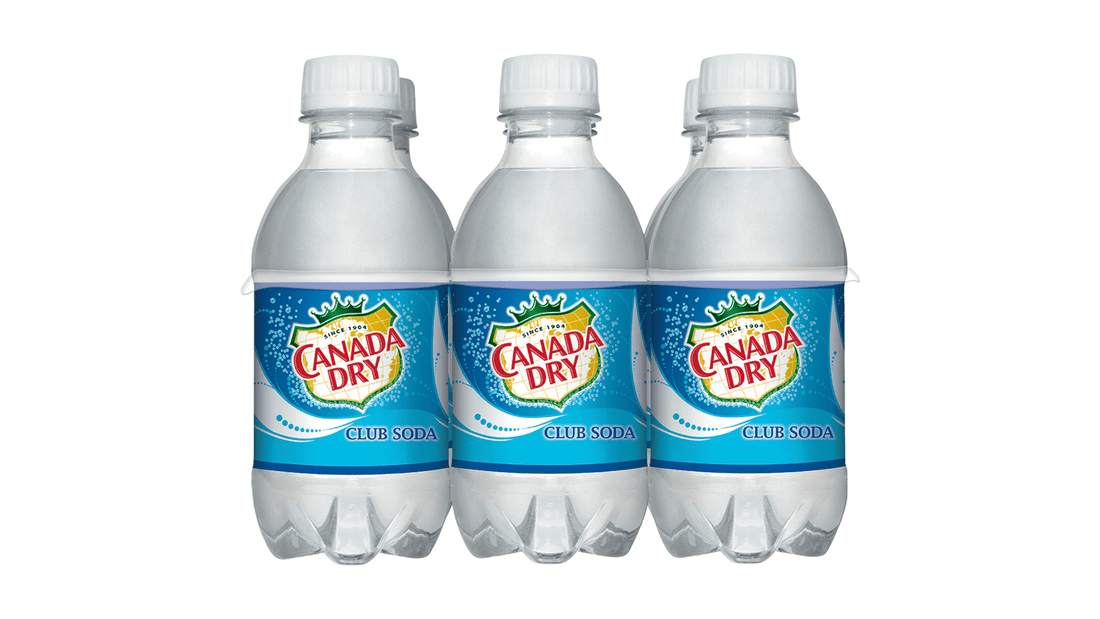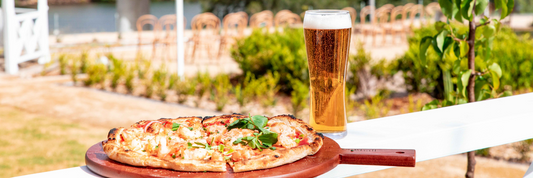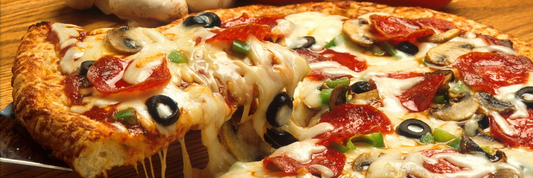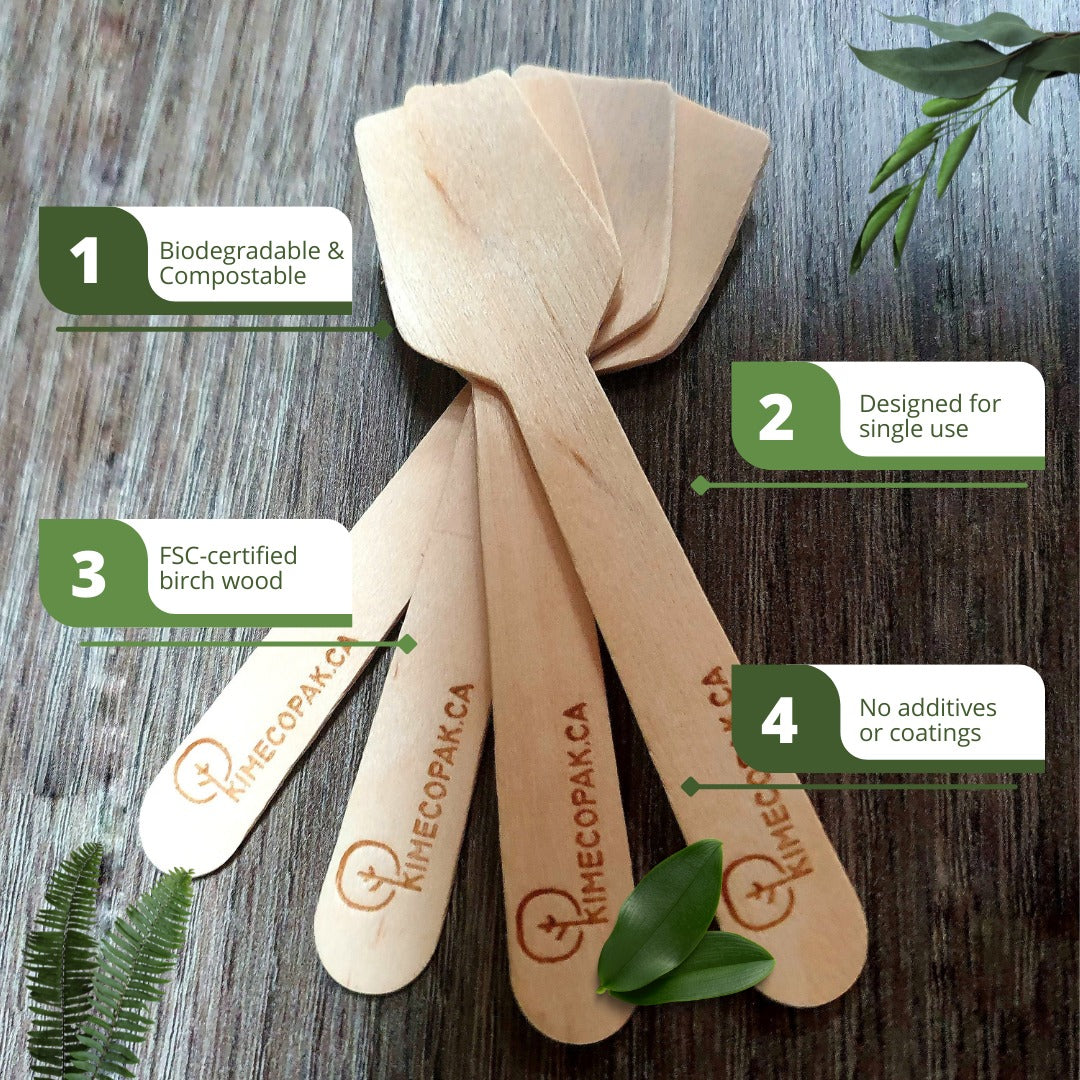Club soda has been around for centuries and is a popular beverage that is often used as a mixer in cocktails or enjoyed on its own. But what is club soda, and how does it differ from other types of carbonated water? In this article, we will explore the origins and uses of club soda, as well as the differences between club soda, seltzer water, and tonic water.
What Is Club Soda?
Simply put, it's artificially carbonated water. Unlike still water, club soda undergoes a carbonation process that infuses it with carbon dioxide gas, producing those delightful bubbles we enjoy. However, the key difference between club soda and other types of carbonated water lies in the addition of minerals. These minerals contribute to a unique flavor profile, distinguishing club soda from its peers.
The primary purpose is to enhance the taste profile of the water. Historically, the intention was to replicate the flavor and mineral content of naturally occurring mineral water. The addition of minerals provides a slightly salty or mineral-like tang that can elevate mixed drinks and culinary dishes. This makes club soda not just a refreshing beverage, but also a versatile ingredient in numerous recipes.

Decoding the Ingredients of Club Soda
The Primary Component: Carbonated Water
The cornerstone of club soda is carbonated water. But how does carbonation work? The process involves dissolving carbon dioxide gas under high pressure into the water. Once the pressure is released, the gas forms tiny bubbles, creating the effervescence we associate with drinks like club soda. This dynamic interaction between water and carbon dioxide is what gives club soda its refreshing fizz.
The Key Minerals: What's Typically Inside
The mineral composition of club soda plays a significant role in its taste. Here are the common minerals you might find in club soda:
- Sodium bicarbonate (baking soda): This mineral contributes to the flavor and helps to buffer acidity, creating a smoother taste.
- Sodium chloride (table salt): Adds a hint of salinity that can enhance overall flavor enjoyment.
- Potassium sulfate: Introduces a slightly bitter-salty taste, complementing the other flavors.
- Disodium phosphate: Acts as an emulsifier and a buffering agent, helping maintain the drink's stability.
Other minerals may also be present in varying amounts, further diversifying the taste and making club soda an interesting choice for many palates.
Club Soda vs. Its Fizzy Counterparts

Club Soda vs. Seltzer
One of the crucial distinctions between club soda and its counterpart, seltzer, is the presence of added minerals in club soda. While club soda is enhanced with minerals to provide a specific taste, seltzer is essentially just plain carbonated water without any added ingredients. When mixing drinks, the choice between the two can affect the flavor profile; for instance, using club soda might add a subtle complexity to cocktails that seltzer would not provide.
Club Soda vs. Sparkling Water
Sparkling water differs from club soda in that it can be either naturally or artificially carbonated. Naturally sparkling water often originates from mineral springs and contains naturally occurring minerals. In contrast, club soda features added minerals for flavor. This difference can result in distinct taste profiles; sparkling water might have a more varied mineral content due to its source, while club soda typically offers a consistent flavor with its added minerals.
Club Soda vs. Tonic Water
Tonic water is another bubbly beverage commonly found in bars, but it stands apart from club soda due to its unique ingredient: quinine. Quinine gives tonic water its characteristic bitterness and sweetness, setting it apart both in flavor and application. When mixing drinks, the choice between club soda and tonic water can drastically change the final result; club soda keeps it light and refreshing, while tonic water adds depth with its distinct taste.

The Versatile Uses of Soda
The-To Mixer for Cock
Club soda has carved out a spot in the cocktail world as a mixer. It provides delightful fizz that enhances the drinking without overshadowing the flavors of the involved. This makes it particularly for cocktails where the goal is to achieve a refreshing drink rather than an overpowering one.
Why club soda is popular in cocktails: Many mixologists appreciate club soda for its ability to add effervescence and a touch of dilution, allowing the drink's key flavors to shine through. It's versatile enough to complement a variety of spirits and ingredients.
Classic cocktails using club soda:
- Gin Rickey: A refreshing blend of gin, lime juice, and club soda that epitomizes simplicity and flavor.
- Tom Collins: A traditional cocktail combining gin, lemon juice, sugar, and club soda. The club soda balances the sweetness while adding a lively fizz.
A Refreshing Non-Alcoholic Beverage
Beyond its role in cocktails, club soda stands out as a satisfying non-alcoholic alternative.
- Enjoying club soda on its own: A chilled glass of club soda with a twist of citrus—be it lemon or lime—offers a refreshing drink that's both crisp and invigorating.
- Base for homemade flavored sodas: With the rise of DIY beverages, club soda serves as an excellent base for creating flavored sodas at home. Add a splash of fruit juice or some fresh herbs, and you have a delightful concoction that rivals store-bought options.
Unexpected Uses
Club soda may surprise you with its variety of uses beyond just refreshment.
- Cleaning stains: Anecdotal evidence suggests that club soda can tackle certain stains—particularly those from red wine or food—due to its carbonation and mineral content. While results may vary, some individuals have sworn by its effectiveness.
- Potential digestive benefits: Although scientific studies are limited, some claim that carbonated mineral waters like club soda may aid digestion. However, it is important to approach this with caution as further studies are necessary to substantiate these claims.

Exploring the Unique Characteristics of Club Soda
The Subtle Taste Profile
One of the defining features of club soda is its nuanced taste profile, which sets it apart from other carbonated waters.
- Added minerals contribute to taste: Unlike plain carbonated water, club soda typically includes minerals such as sodium bicarbonate, potassium sulfate, and sodium chloride. These additions create a light, crisp flavor that can enhance both cocktails and stand-alone drinks.
- Slight salinity and mineral tang: The mineral content results in a mild salinity and a unique tang, which can add depth when used in mixed drinks or enjoyed straight.
Brand Variations and Mineral Composition
Not all club sodas are created equal; there are slight variations in flavor due to differing mineral compositions across brands.
- Brand variations affect taste: Some brands might emphasize certain minerals over others, leading to subtle differences in taste. When choosing a club soda, you may find that some offer a sharper taste, while others are smoother.
What Is the Difference Between Club Soda, Seltzer, and Tonic?
Here is a table outlining the key differences between club soda, seltzer water, and tonic water:
|
Club Soda |
Seltzer Water |
Tonic Water |
|
Contains added minerals and flavors |
Contains only carbonated water |
Contains quinine and other added flavors |
|
Tangy and slightly salty taste |
Neutral taste |
Bitter taste with added sweetness |
|
Used as a mixer in cocktails or enjoyed on its own |
Can be used as a substitute for sparkling water |
Used primarily as a mixer in cocktails |
|
Often labeled as "soda water" |
Sometimes labeled as "sparkling water" |
Always labeled as "tonic water" |
Conclusion
In summary, club soda is more than just a bubbly water option. Its added minerals play a crucial role in providing a unique taste profile that enhances the dining and drinking experience.
Role in beverages: Whether as a key ingredient in your favorite cocktail or enjoyed on its own, club soda's effervescence offers a delightful way to stay refreshed. Its versatile nature means it's worth finding a space in your beverage rotation.
Frequently Asked Questions (FAQ)
Q1: Is club soda the same as sparkling water?
A: No, club soda has added minerals, while sparkling water can be naturally or artificially carbonated and may or may not have naturally occurring minerals.
Q2: Can I use seltzer instead of club soda in a cocktail?
A: Yes, in most cases, seltzer can be substituted for club soda, but the mineral taste might be slightly different.
Q3: Is club soda healthy?
A: Club soda is generally a low-calorie and hydrating beverage. However, individuals sensitive to sodium should be mindful of its sodium content.
Q4: Where can I buy club soda?
A: Club soda is widely available in most grocery stores, supermarkets, and beverage retailers.
Related Articles:







